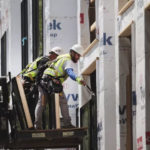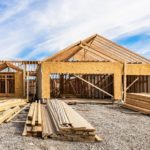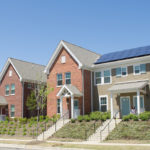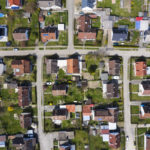A growing number of developers believe wellness home features are a big pull for buyers. The wellness real estate boom first sought to make office environments healthier, and now it is focusing more on the residential market, according to a new report released by the Global Wellness Institute.
Homes that are designed for wellness usually focus on energy efficiency and sustainable construction first, and then look at wellness programs within the community. Indoor components that can make a home healthier may include natural lighting, air quality, proximity to green spaces, exercise facilities, and nontoxic paints and finishes.
Wellness real estate has grown to a $134 billion global industry, according to researchers at the Global Wellness Institute. The number of wellness-oriented residential, mixed use, and commercial properties has risen 6.4 percent annually since 2015. The Global Wellness Institute predicts that wellness-oriented real estate will continue to grow at that pace through 2022 and reach $180 billion by then. Globally, the U.S. leads the market share in wellness real estate developments.
“We’re becoming more unhealthy as we live longer,” Ophelia Yeung, a senior research fellow at the Global Wellness Institute, told Mansion Global. That has led more people to ask themselves “why they’ve invested their life savings in a home that is not keeping them well.”
Prospective owners may be willing to pay a premium for a healthier home or community. Home buyers may be willing to pay 10 to 25 percent premiums for homes in wellness developments at the middle and upper end of the market, according to the Global Wellness Institute’s report.
“There is a recognition that building for human health is going to be the core [value]” in the real estate market going forward, Yeung says. “When you look at it from that perspective, it’s a whole lot bigger than the luxury apartment with the spa, the gym, the swimming pool.”
At some high-end developments, staff are assessing the homeowner’s health and wellness as soon as they move in, Mansion Global reports. For example, condo owners at Canyon Ranch in Lenox, Mass., consult with a personal wellness adviser to implement individualized wellness plans, which include on-site physicians, nutritionists, exercise physiologists, behavioral counselors, and spiritual wellness experts.
The wellness movement seems to be taking root more in the high-end market, but the lower end of real estate will soon catch on too, Kavita Kumari, principal engineer at Cundall, a London-based multidisciplinary engineering consultancy, told Mansion Global. As the products and materials used in making healthier homes grow in appeal, costs will come down, Kumari says. Yeung estimates that in three to five years, the mid-market will catch up with the luxury segment. Broad consumer awareness about healthy homes is “just being awakened,” Yeung says.
Source:
“Wellness Real Estate Has Blossomed Into a $134 Billion Industry Worldwide—and It’s Growing Fast,” Mansion Global (June 17, 2018)












